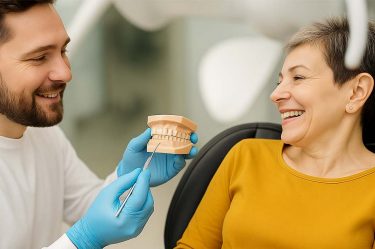Hypnodontics- Dental Practice To Minimize Anxiety And Dental Phobia
In dental terms, Hypnodontics in very modest terms is widely known as Hypnosis. It is an approach dentists employ to give controlled suggestions to a patient’s brain in a state of a mild hypnotic trance. Hypnosis is a state of reformed consciousness in which the patient becomes more responsive to commands and suggestions for a secure treatment.
The Importance of This Technique-
Patients can have various kinds of anxiety or phobias like fears of pain, the dental drill, needles, injections, blood, effectiveness of the anaesthesia, the lack of control or even something like sounds, sights or smell at a dental clinic. These different types of phobias at a dentist are all categorized as Odontophobia or Dentophobia. Some people may not even be aware of it. In a situation like this Hypnodontics helps to not just overcome these phobias but also prevent factors that can cause complications during treatment or inspection like to control any salivation, gag reflex, bleeding, difficulty in bleeding, or inconvenience caused by the instruments that put water and air on the teeth.
The Seven Steps Of Hypnodontics –

- Establishing a rapport or connection with the patient to build trust between the dentist and the patient. Find out more about a patient’s anchor that he or she will be used. This anchor is a connection of a very important life event through any of the 5 human senses.
- Examination of patient’s receptiveness towards hypnosis. It is the step that determines a patient’s compatibility to hypnosis and determines whether Hypnodontics can be used.
- Induction or introduction of hypnosis on the patient, the trigger can be direct (Hypnoanesthesia) or indirect (Conversational or Covert hypnosis). These triggers are discussed briefly below. The dependence of induction is amongst the initial steps as without a rapport it is very difficult to use Hypnodontics.
- Deepening the trance set in the earlier step. It is usually only necessary for acute dental issues. This process takes time and might require different sessions at times.
- Operating or observing the issue. This is where the dentist treats or observes dental issues a patient has. Hypnodontics helps the dentist in many ways as mentioned above and makes the procedure as less painful as possible. It works as good as an anaesthetic.
- Securing the hypnosis done to the patient to avoid any problems they might face. Trying to help the patient keep feeling less or no pain and determining when to remove the hypnosis.
- Dehypnodontics is the method to completely get the patient out of the trance and make sure that the patient has complete control and coordination of themselves. It may require some time and rest but it is achieved without any issues.
Different Triggers of Hypnodontics-

Hypnoanesthesia – It is a method in which the patient uses a calm state of mind to transmit sensation of numbness in any section of the mouth required. This method is also called Self-anesthetizing.
Conversational hypnosis or Covert hypnosis – It is the technique used by dentists to hypnotize a patient within a normal conversation without the patient getting aware that he or she is being hypnotised.
Hypnodontics lessens the dosage or in a few cases it even eliminates any prerequisite of biochemical anaesthetic and thus increases comfort of the dental procedures eventually resulting in satisfaction of the patient. This technique also helps the dental personnel as they don’t have to convince the patient for the procedure.


No Comment